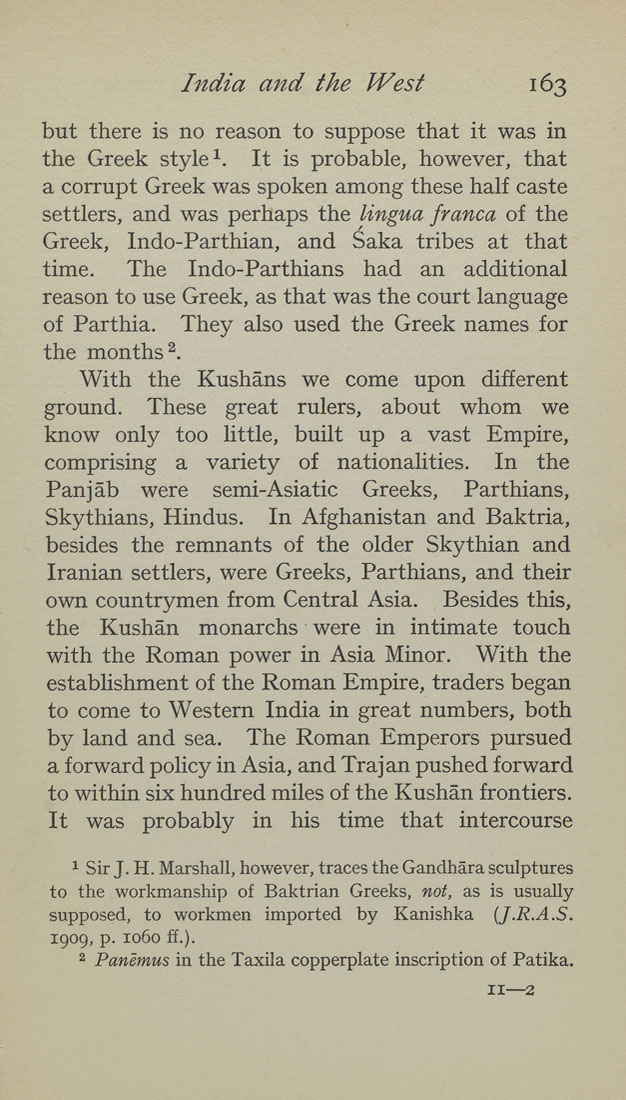India and the West 163
but there is no reason to suppose that it was in
the Greek style ^. It is probable, however, that
a corrupt Greek was spoken among these half caste
settlers, and was perhaps the lingua franca of the
Greek, Indo-Parthian, and Saka tribes at that
time. The Indo-Parthians had an additional
reason to use Greek, as that was the court language
of Parthia. They also used the Greek names for
the months^.
With the Kushans we come upon different
ground. These great rulers, about whom we
know only too little, built up a vast Empire,
comprising a variety of nationalities. In the
Panjab were semi-Asiatic Greeks, Parthians,
Skythians, Hindus. In Afghanistan and Baktria,
besides the remnants of the older Skythian and
Iranian settlers, were Greeks, Parthians, and their
own countrymen from Central Asia. Besides this,
the Kushan monarchs were in intimate touch
with the Roman power in Asia Minor. With the
establishment of the Roman Empire, traders began
to come to Western India in great numbers, both
by land and sea. The Roman Emperors pursued
a forward policy in Asia, and Trajan pushed forward
to within six hundred miles of the Kushan frontiers.
It was probably in his time that intercourse
^ Sir J. H. Marshall, however, traces the Gandhara sculptures
to the workmanship of Baktrian Greeks, not, as is usually
supposed, to workmen imported by Kanishka {J.R.A.S.
1909, p. 1060 ff.).
2 Panemus in the Taxila copperplate inscription of Patika.
II—2
|








